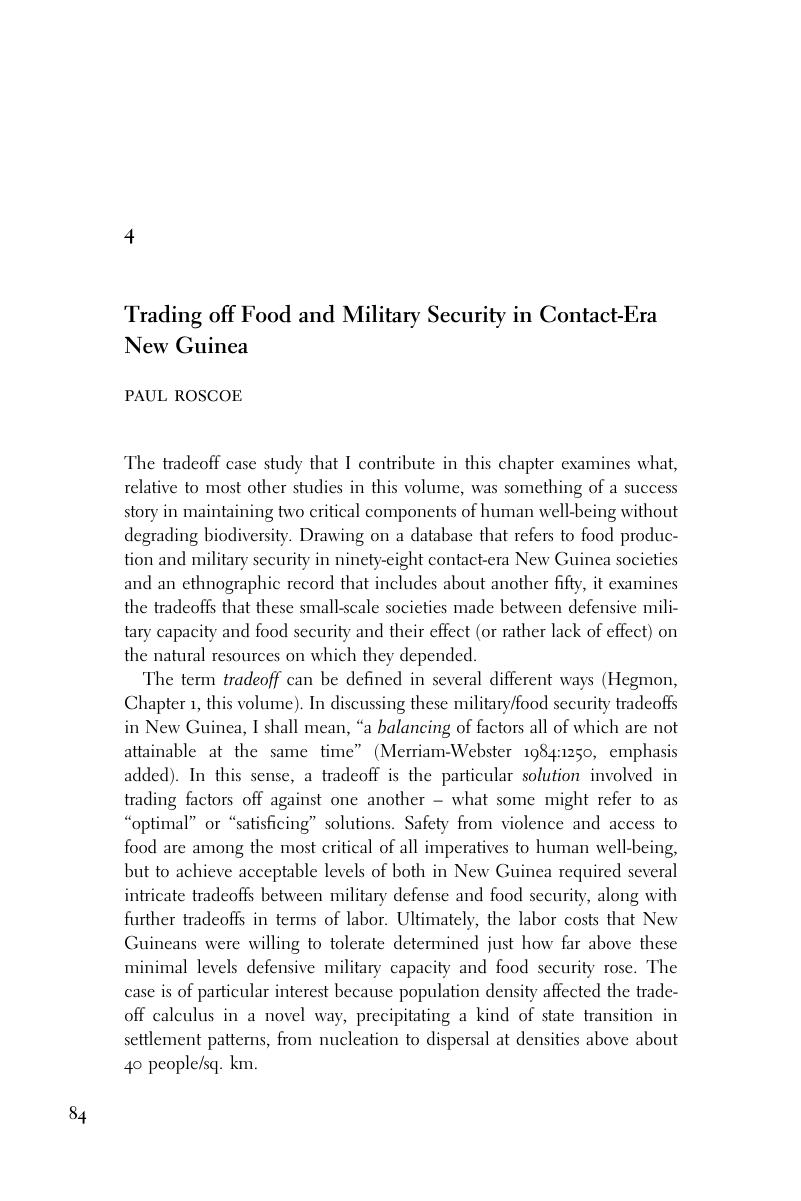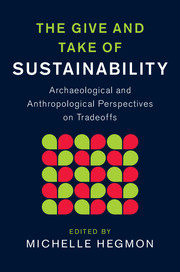Book contents
- The Give and Take of Sustainability
- New Directions in Sustainability and Society
- The Give and Take of Sustainability
- Copyright page
- Contents
- Figures
- Tables
- Contributors
- Preface
- 1 Introduction
- 2 Diversity, Reciprocity, and the Emergence of Equity-Inequity Tradeoffs
- 3 Modeling Tradeoffs in a Rural Alaska Mixed Economy
- 4 Trading off Food and Military Security in Contact-Era New Guinea
- 5 Will Agricultural Technofixes Feed the World?
- 6 Tradeoffs in Pre-Columbian Maya Water Management Systems
- 7 Growth and Inter-Generational Tradeoffs
- 8 Vulnerability to Food Insecurity
- 9 Tradeoffs in Coast Salish Social Action
- 10 Tradeoffs and Human Well-Being
- 11 Household- vs. National-Scale Food Storage
- 12 Some Analytical Tradeoffs of Talking about Tradeoffs
- Index
- References
4 - Trading off Food and Military Security in Contact-Era New Guinea
Published online by Cambridge University Press: 04 July 2017
- The Give and Take of Sustainability
- New Directions in Sustainability and Society
- The Give and Take of Sustainability
- Copyright page
- Contents
- Figures
- Tables
- Contributors
- Preface
- 1 Introduction
- 2 Diversity, Reciprocity, and the Emergence of Equity-Inequity Tradeoffs
- 3 Modeling Tradeoffs in a Rural Alaska Mixed Economy
- 4 Trading off Food and Military Security in Contact-Era New Guinea
- 5 Will Agricultural Technofixes Feed the World?
- 6 Tradeoffs in Pre-Columbian Maya Water Management Systems
- 7 Growth and Inter-Generational Tradeoffs
- 8 Vulnerability to Food Insecurity
- 9 Tradeoffs in Coast Salish Social Action
- 10 Tradeoffs and Human Well-Being
- 11 Household- vs. National-Scale Food Storage
- 12 Some Analytical Tradeoffs of Talking about Tradeoffs
- Index
- References
Summary

- Type
- Chapter
- Information
- The Give and Take of SustainabilityArchaeological and Anthropological Perspectives on Tradeoffs, pp. 84 - 108Publisher: Cambridge University PressPrint publication year: 2017



